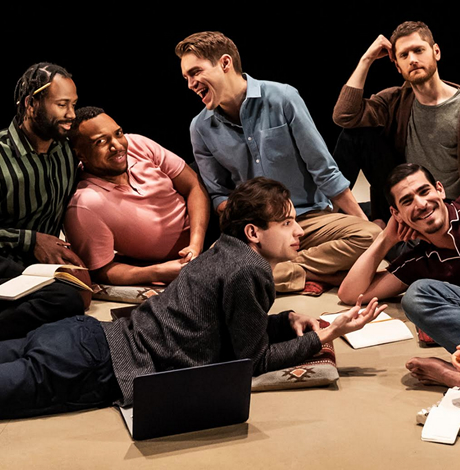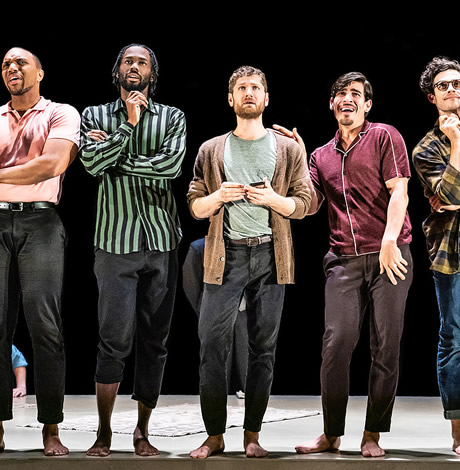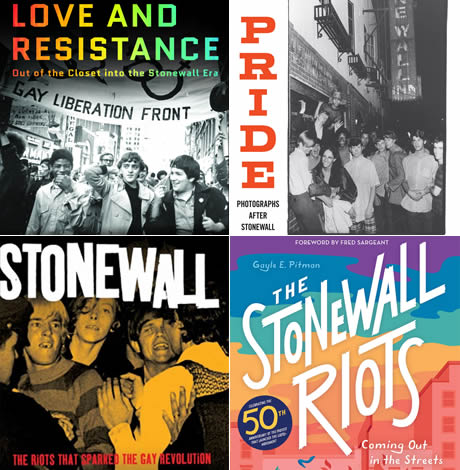Books
SPRING ARTS 2019 BOOKS: Stonewall 50th inspires new books
Dustin Lance Black shares memories of growing up gay and Mormon in ‘Mama’s Boy’
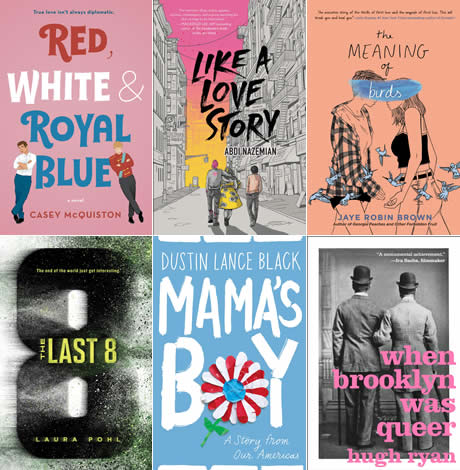
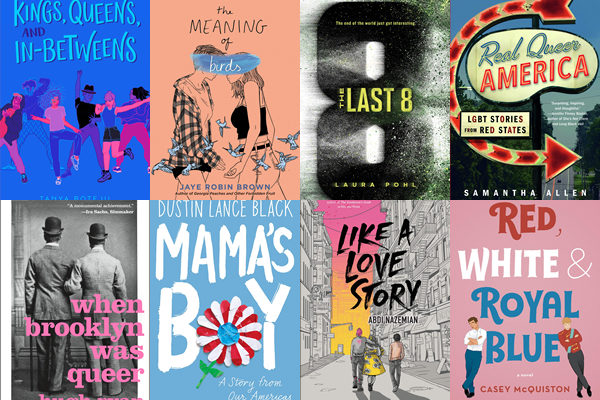
In “I.M.: A Memoir” (Flatiron Books, just released), American fashion designer Isaac Mizrahi shares his experiences growing gay in a Syrian Orthodox Jewish family, living through the AIDS epidemic and struggling with weight, insomnia and depression.
In their highly anticipated “Sissy: A Coming-of-Gender Story” (G.P. Putnam’s Sons, March 5), LGBT rights activist and host of MSNBC’s Queer 2.0 Jacob Tobia reflects on their relationship with gender from being labeled male at birth to identifying as genderqueer today.
“Love and Resistance: Out of the Closet into the Stonewall Era” (W. W. Norton & Company, March 5) brings together over 100 powerful photographs from the LGBT liberation movement, with a focus on queer activism in the ’60s and ’70s. Put together by Jason Baumann, Kay Tobin Lahusen and Diana Davies, the book will come out just in time for the 50th anniversary of Stonewall.
First released as a play at the Young Vic Theatre in London, Matthew Lopez’s “The Inheritance” (Faber & Faber, March 5) gives a glimpse into the lives young gay men living in New York City after the peak of the AIDS epidemic.
“When Brooklyn Was Queer: A History” (St. Martin’s Press, March 5) takes a new look at LGBT life in Brooklyn from the mid-1850s to modern day. Written by queer historian Hugh Ryan, the book explores LGBT history in New York beyond Greenwich Village, Harlem and the rest of Manhattan.
In “Real Queer America: LGBT Stories from Red States” (Little, Brown and Company, March 5), Daily Beast reporter Samantha Allen offers a glimpse into LGBT life in Red America. A trans woman who holds onto an undying love for “flyover country,” Allen shares the incredible stories of the activists and everyday Americans who chose not to leave their homes for the coasts.
In “The Last 8” (Sourcebooks, March 5), debut YA author Laura Pohl tells the story of Clover Martinez, a bisexual aromantic girl and one of the few survivors of an alien invasion on Earth. After the invasion, Clover meets a group of other teens her age but suddenly becomes conflicted about her decision to join them when she learns they don’t want to fight back.
Award-winning playwright and debut author Mariah MacCarthy introduces us to Jenna Watson in her novel “Squad” (Farrar, Straus, and Giroux, March 12). A cheerleader whose life turns on its head when the girls she views as her best friends stop inviting her out with them, Jenna starts to date a trans boy and explore life beyond cheer.
Award-winning writer and former public school teacher Mathangi Subramanian provides a glimpse into queer life in India in her first work of literary fiction. “A People’s History of Heaven” (Algonquin, March 19) tells the story of a group of five girls — queer, trans or otherwise marginalized — who fight back against the government officials who want to tear down their homes in the 30-year-old slum they call Heaven.
In “Unbecoming: A Memoir of Disobedience” (Atria Books, March 26), former U.S. Marine Captain Anuradha Bhagwati reflects on her experience as a bisexual woman growing up with strict Indian parents and her fight that ultimately allowed women to serve in combat roles in the U.S. military.
In “This One Looks Like a Boy: My Gender Journey to Life as a Man” (Greystone Books, March 31), Canadian writer and former police officer Lorimer Shenher shares the story of his transition, from his gender dysphoria and struggles with alcohol to his decision to be open about his identity and receive gender reassignment surgery in his 50s. “This One Looks Like a Boy” is Shenher’s second book, following “That Lonely Section of Hell: The Botched Investigation of a Serial Killer Who Almost Got Away.”
In “He Said, She Said: Lessons, Stories, and Mistakes from my Transgender Journey” (Harmony, April 2), famous beauty Youtuber Gigi Gorgeous shares the story of her transition, from her early years as a self-described “high school mean girl” to her decision to be open about her gender identity and sexuality.
Soraya Zaman’s “American Boys” (Daylight Books, April 2) showcases a visual representation of trans-masculine identity across the United States. With an introduction from trans porn star, director and icon Buck Angel, the book offers a new look at gender expression and what it means to be a man.
In “The Meaning of Birds” (HarperTeen, April 16), young adult author Jaye Robin Brown gives a glimpse into Jess’s world after the love of her life Vivi passes away. Jess abandons her plans to attend art school and finds some new friends as she processes her grief.
Gay screenwriter Dustin Lance Black won an Academy Award for his work on “Milk,” the 2008 biographical film that depicted the life of Harvey Milk. He also comes from a Mormon family that didn’t initially want to accept him. In “Mama’s Boy: A Story from Our Americas” (Knopf, April 30), he tells the story of his coming out and how his family remained close in the years following.
To celebrate the 50th anniversary of the Stonewall Riots, The New York Public Library put together “The Stonewall Reader” (Penguin Classics, April 30). With a forward from gay novelist Edmund White, the book shares diary entries, literature, articles and more from the years preceding and directly following the uprising.
Debut author Arabelle Sicardi is giving LGBT kids a few icons of their own in “Queer Heroes” (Wide Eyed Editions, May 7). The children’s book shares the lives of 52 prominent LGBT figures throughout history, from Audre Lorde to Frida Kahlo.
Debut author Tanya Boteju’s “Kings, Queens and In-Betweens” (Simon Pulse, May 7) mixes drag, identity and self-discovery. In the novel, Nima Kumara-Clark grows bored with her life in Bridgeton and heads to the other side of town for a change in scene. She becomes wrapped up in a world of drag and learns more about herself than she expected.
The much-anticipated coffee table book “We Are Everywhere: Protest, Power and Pride in the History of Queer Liberation” (Ten Speed Press, May 7) takes a sweeping look at queer history from the pre-Stonewall era to modern day. Written by the creators of the widely popular @lgbt_history Instagram account, Matthew Riemer and Leighton Brown, the book combines about 300 photographs with extensive historical narrative to provide a new and more comprehensive window into LGBT life and resistance.
In “Red, White & Royal Blue: A Novel” (St. Griffin’s Press, May 14), first-time author Casey McQuiston tells the story of America’s First Son’s meeting with the Prince of Wales and the international ramifications of the love the two develop for each other.
In “Like a Love Story,” (June 4) Abdi Nazemian details the teenage years of Reza, an Iranian boy who moves to New York City in 1989. Reza begins to date a girl named Judy but soon realizes he must find a way out of their relationship when he falls for her best friend Art.
Books
New book offers observations on race, beauty, love
‘How to Live Free in a Dangerous World’ is a journey of discovery
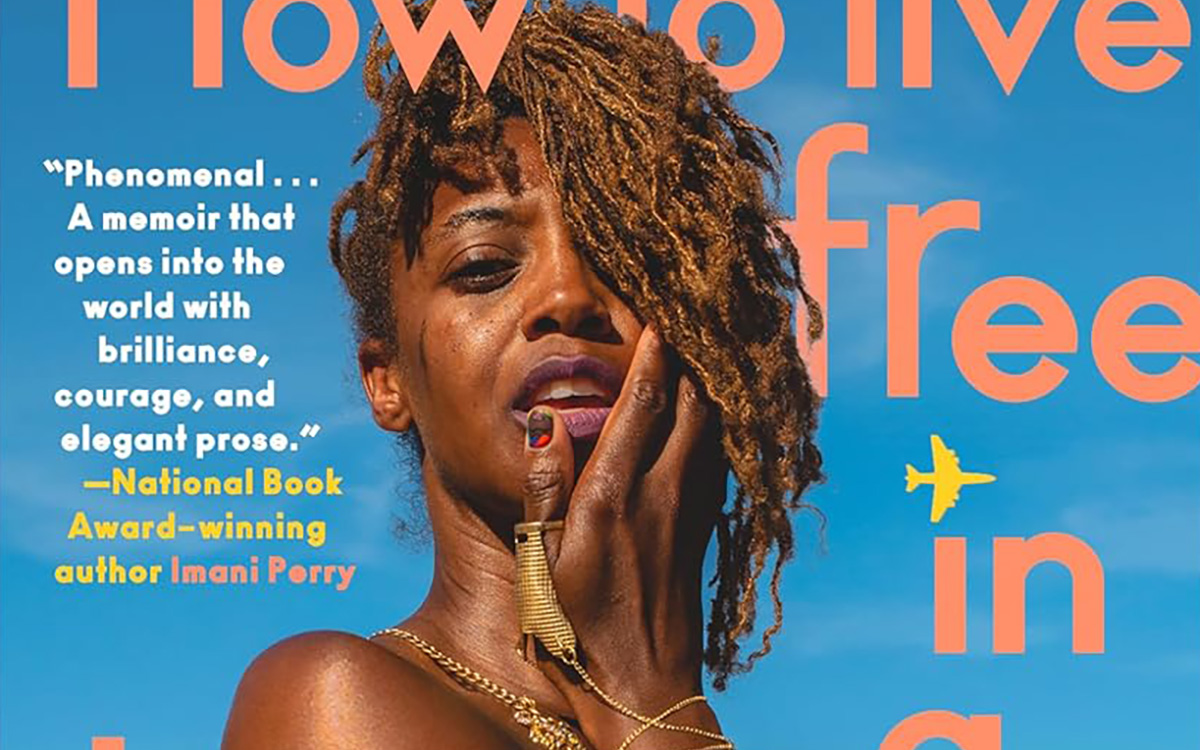
‘How to Live Free in a Dangerous World: A Decolonial Memoir’
By Shayla Lawson
c.2024, Tiny Reparations Books
$29/320 pages
Do you really need three pairs of shoes?
The answer is probably yes: you can’t dance in hikers, you can’t shop in stilettos, you can’t hike in clogs. So what else do you overpack on this long-awaited trip? Extra shorts, extra tees, you can’t have enough things to wear. And in the new book “How to Live Free in a Dangerous World” by Shayla Lawson, you’ll need to bring your curiosity.

Minneapolis has always been one of their favorite cities, perhaps because Shayla Lawson was at one of Prince’s first concerts. They weren’t born yet; they were there in their mother’s womb and it was the first of many concerts.
In all their travels, Lawson has noticed that “being a Black American” has its benefits. People in other countries seem to hold Black Americans in higher esteem than do people in America. Still, there’s racism – for instance, their husband’s family celebrates Christmas in blackface.
Yes, Lawson was married to a Dutch man they met in Harlem. “Not Haarlem,” Lawson is quick to point out, and after the wedding, they became a housewife, learned the language of their husband, and fell in love with his grandmother. Alas, he cheated on them and the marriage didn’t last. He gave them a dog, which loved them more than the man ever did.
They’ve been to Spain, and saw a tagline in which a dark-skinned Earth Mother was created. Said Lawson, “I find it ironic, to be ordained a deity when it’s been a … journey to be treated like a person.”
They’ve fallen in love with “middle-American drag: it’s the glitteriest because our mothers are the prettiest.” They changed their pronouns after a struggle “to define my identity,” pointing out that in many languages, pronouns are “genderless.” They looked upon Frida Kahlo in Mexico, and thought about their own disability. And they wish you a good trip, wherever you’re going.
“No matter where you are,” says Lawson, “may you always be certain who you are. And when you are, get everything you deserve.”
Crack open the front cover of “How to Live Free in a Dangerous World” and you might wonder what the heck you just got yourself into. The first chapter is artsy, painted with watercolors, and difficult to peg. Stick around, though. It gets better.
Past that opening, author Shayna Lawson takes readers on a not-so-little trip, both world-wide and with observant eyes – although it seems, at times, that the former is secondary to that which Lawson sees. Readers won’t mind that so much; the observations on race, beauty, love, the attitudes of others toward America, and finding one’s best life are really what takes the wheel in this memoir anyhow. Reading this book, therefore, is not so much a vacation as it is a journey of discovery and joy.
Just be willing to keep reading, that’s all you need to know to get the most out of this book. Stick around and “How to Live Free in a Dangerous World” is what to pack.
The Blade may receive commissions from qualifying purchases made via this post.
Books
Story of paralysis and survival features queer characters
‘Unswerving: A Novel’ opens your eyes and makes you think
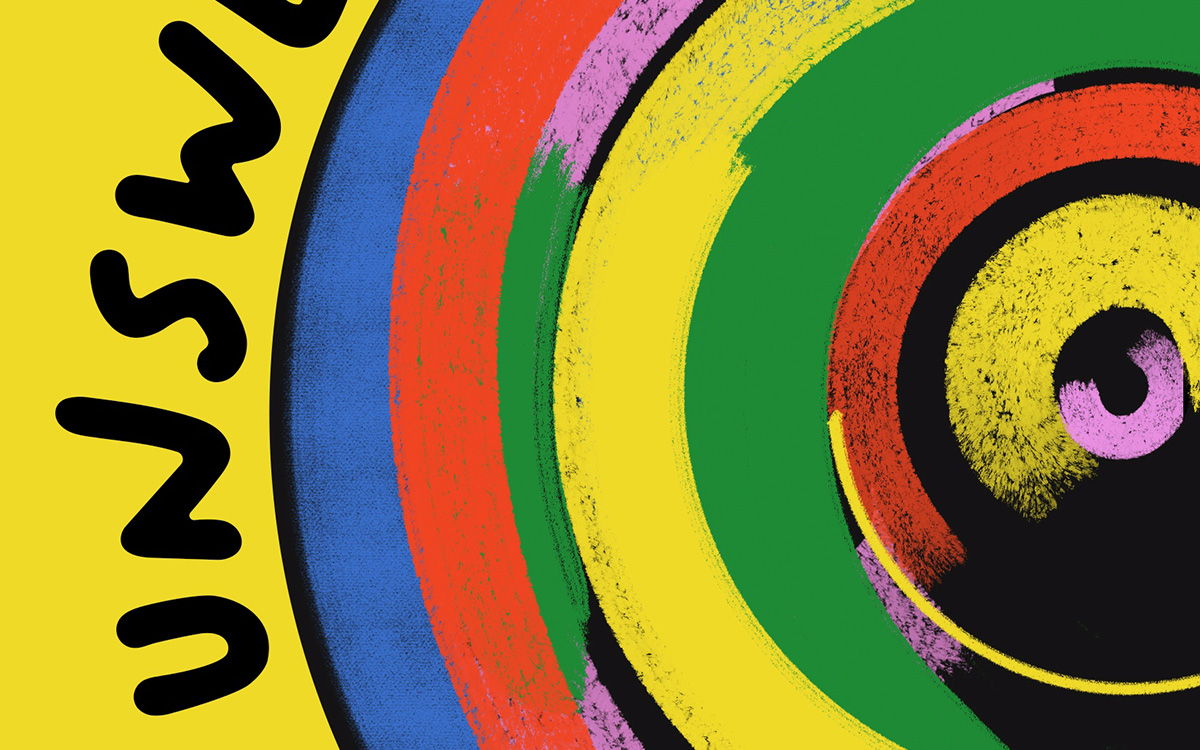
‘Unswerving: A Novel’
By Barbara Ridley
c.2024, University of Wisconsin Press
$19.95 / 227 pages
It happened in a heartbeat.
A split-second, a half a breath, that’s all it took. It was so quick, so sharp-edged that you can almost draw a line between before and after, between then and now. Will anything ever be the same again? Perhaps, but maybe not. As in the new book “Unswerving” by Barbara Ridley, things change, and so might you.

She could remember lines, hypnotizing yellow ones spaced on a road, and her partner, Les, asleep in the seat beside her. It was all so hazy. Everything Tave Greenwich could recall before she woke up in a hospital bed felt like a dream.
It was as though she’d lost a month of her life.
“Life,” if you even wanted to call it that, which she didn’t. Tave’s hands resembled claws bent at the wrist. Before the accident, she was a talented softball catcher but now she could barely get her arms to raise above her shoulders. She could hear her stomach gurgle, but she couldn’t feel it. Paralyzed from the chest down, Tave had to have help with even the most basic care.
She was told that she could learn some skills again, if she worked hard. She was told that she’d leave rehab some day soon. What nobody told her was how Les, Leslie, her partner, girlfriend, love, was doing after the accident.
Physical therapist Beth Farringdon was reminded time and again not to get over-involved with her patients, but she saw something in Tave that she couldn’t ignore. Beth was on the board of directors of a group that sponsored sporting events for disabled athletes; she knew people who could serve as role models for Tave, and she knew that all this could ease Tave’s adjustment into her new life. It was probably not entirely in her job description, but Beth couldn’t stop thinking of ways to help Tave who, at 23, was practically a baby.
She could, for instance, take Tave on outings or help find Les – even though it made Beth’s own girlfriend, Katy, jealous.
So, here’s a little something to know before you start reading “Unswerving”: author Barbara Ridley is a former nurse-practitioner who used to care for patients with spinal cord injuries. That should give readers a comfortable sense of satisfaction, knowing that her experiences give this novel an authenticity that feels right and rings true, no faking.
But that’s not the only appeal of this book: while there are a few minor things that might have readers shaking their heads (HIPAA, anyone?), Ridley’s characters are mostly lifelike and mostly likable. Even the nasties are well done and the mysterious character that’s there-not-there boosts the appeal. Put everyone together, twist a little bit to the left, give them some plotlines that can’t ruined by early guessing, and you’ve got a quick-read novel that you can enjoy and feel good about sharing.
And share you will because this is a book that may also open a few eyes and make readers think. Start “Unswerving” and you’ll (heart) it.
The Blade may receive commissions from qualifying purchases made via this post.
Books
Examining importance of queer places in history of arts and culture
‘Nothing Ever Just Disappears’ shines with grace and lyrical prose
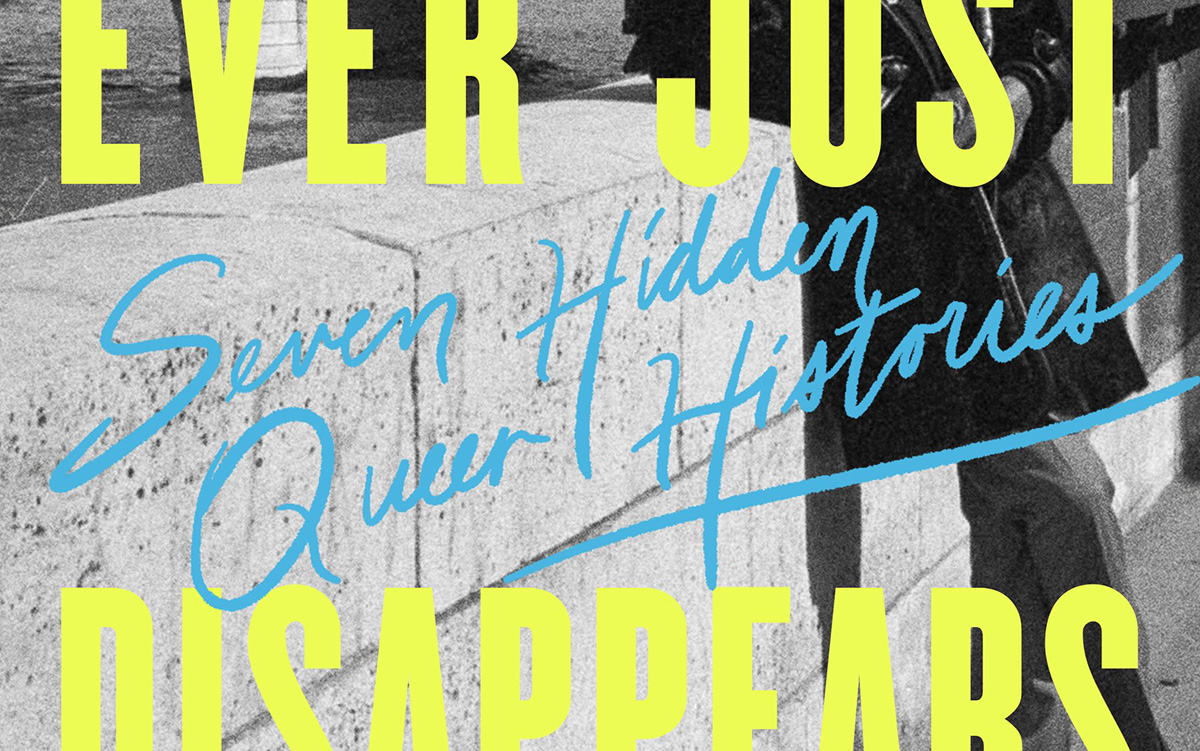
‘Nothing Ever Just Disappears: Seven Hidden Queer Histories’
By Diarmuid Hester
c.2024, Pegasus Books
$29.95/358 pages
Go to your spot.
Where that is comes to mind immediately: a palatial home with soaring windows, or a humble cabin in a glen, a ramshackle treehouse, a window seat, a coffeehouse table, or just a bed with a special blanket. It’s the place where your mind unspools and creativity surges, where you relax, process, and think. It’s the spot where, as in the new book “Nothing Ever Just Disappears” by Diarmuid Hester, you belong.

Clinging “to a spit of land on the south-east coast of England” is Prospect Cottage, where artist and filmmaker Derek Jarman lived until he died of AIDS in 1994. It’s a simple four-room place, but it was important to him. Not long ago, Hester visited Prospect Cottage to “examine the importance of queer places in the history of arts and culture.”
So many “queer spaces” are disappearing. Still, we can talk about those that aren’t.
In his classic book, “Maurice,” writer E.M. Forster imagined the lives of two men who loved one another but could never be together, and their romantic meeting near a second-floor window. The novel, when finished, “proved too radical even for Forster himself.” He didn’t “allow” its publication until after he was dead.
“Patriarchal power,” says Hester, largely controlled who was able to occupy certain spots in London at the turn of the last century. Still, “queer suffragettes” there managed to leave their mark: women like Vera Holme, chauffeur to suffragette leader Emmeline Pankhurst; writer Virginia Woolf; newspaperwoman Edith Craig, and others who “made enormous contributions to the cause.”
Josephine Baker grew up in poverty, learning to dance to keep warm, but she had Paris, the city that “made her into a star.” Artist and “transgender icon” Claude Cahun loved Jersey, the place where she worked to “show just how much gender is masquerade.” Writer James Baldwin felt most at home in a small town in France. B-filmmaker Jack Smith embraced New York – and vice versa. And on a personal journey, Hester mourns his friend, artist Kevin Killian, who lived and died in his beloved San Francisco.
Juxtaposing place and person, “Nothing Ever Just Disappears” features an interesting way of presenting the idea that both are intertwined deeper than it may seem at first glance. The point is made with grace and lyrical prose, in a storyteller’s manner that offers back story and history as author Diarmuid Hester bemoans the loss of “queer spaces.” This is really a lovely, meaningful book – though readers may argue the points made as they pass through the places included here. Landscapes change with history all the time; don’t modern “queer spaces” count?
That’s a fair question to ask, one that could bring these “hidden” histories full-circle: We often preserve important monuments from history. In memorializing the actions of the queer artists who’ve worked for the future, the places that inspired them are worth enshrining, too.
Reading this book may be the most relaxing, soothing thing you’ll do this month. Try “Nothing Ever Just Disappears” because it really hits the spot.
The Blade may receive commissions from qualifying purchases made via this post.
-

 Africa5 days ago
Africa5 days agoCongolese lawmaker introduces anti-homosexuality bill
-
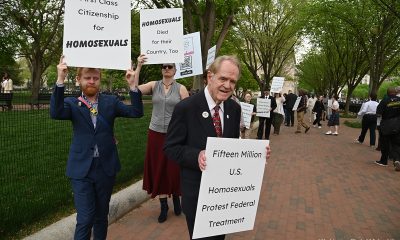
 District of Columbia1 day ago
District of Columbia1 day agoReenactment of first gay rights picket at White House draws interest of tourists
-
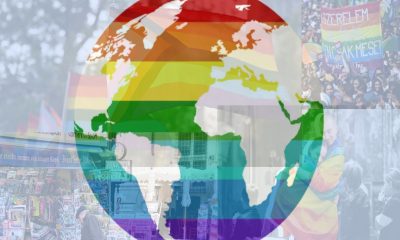
 World5 days ago
World5 days agoOut in the World: LGBTQ news from Europe and Asia
-

 Arizona2 days ago
Arizona2 days agoAriz. governor vetoes anti-transgender, Ten Commandments bill

